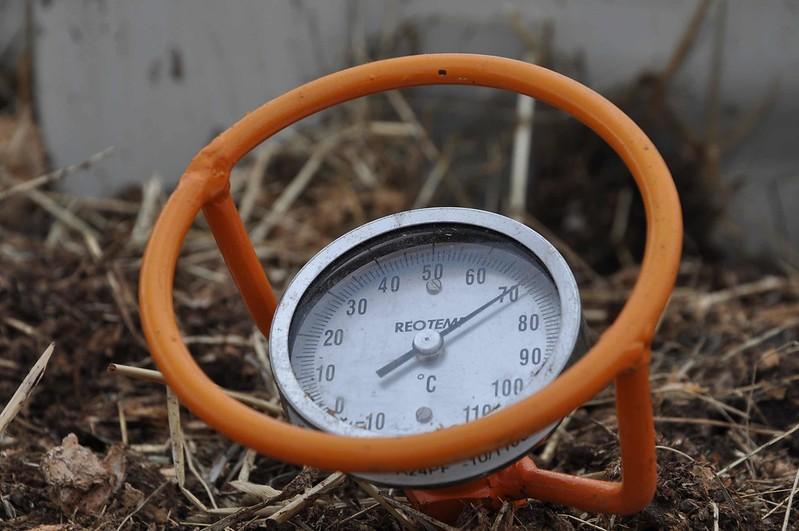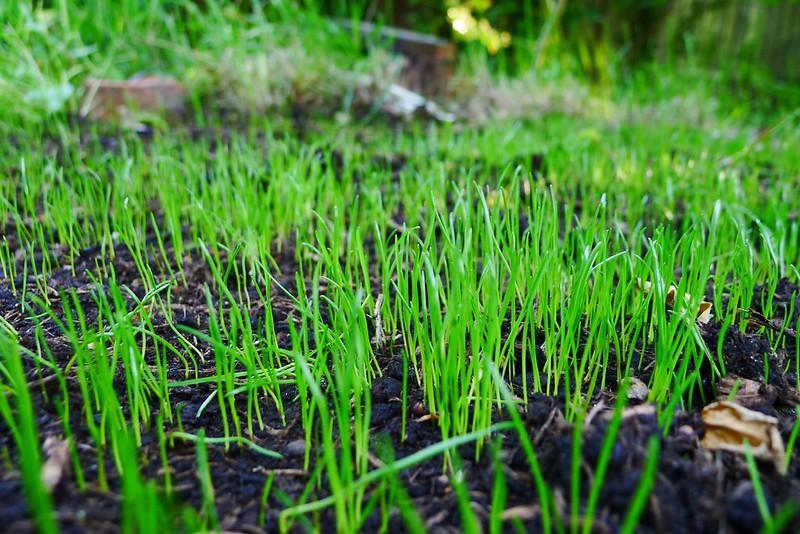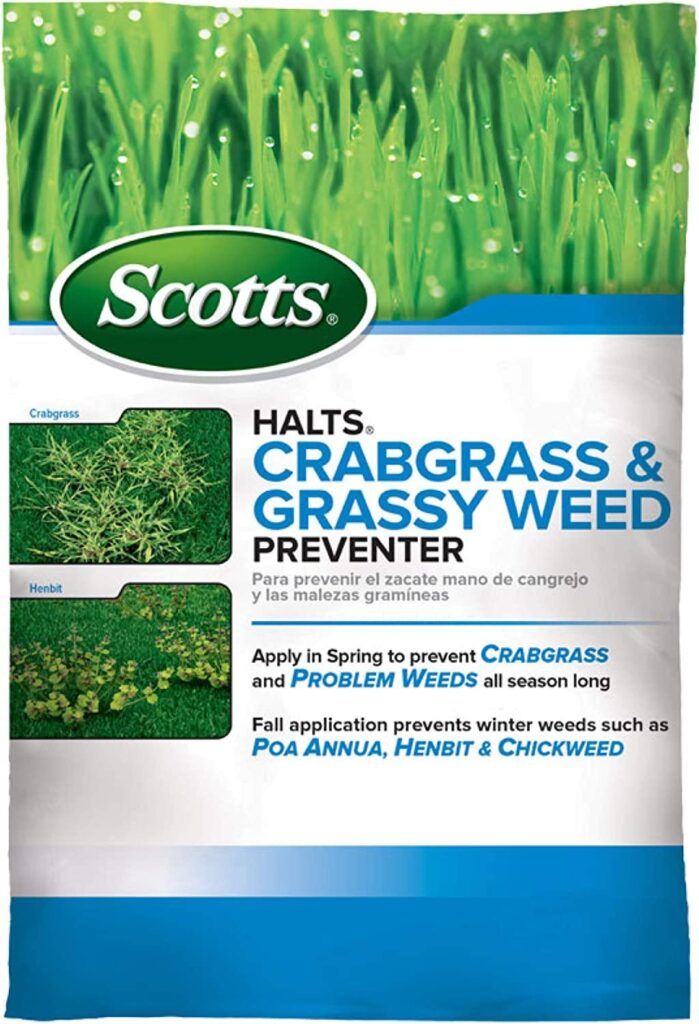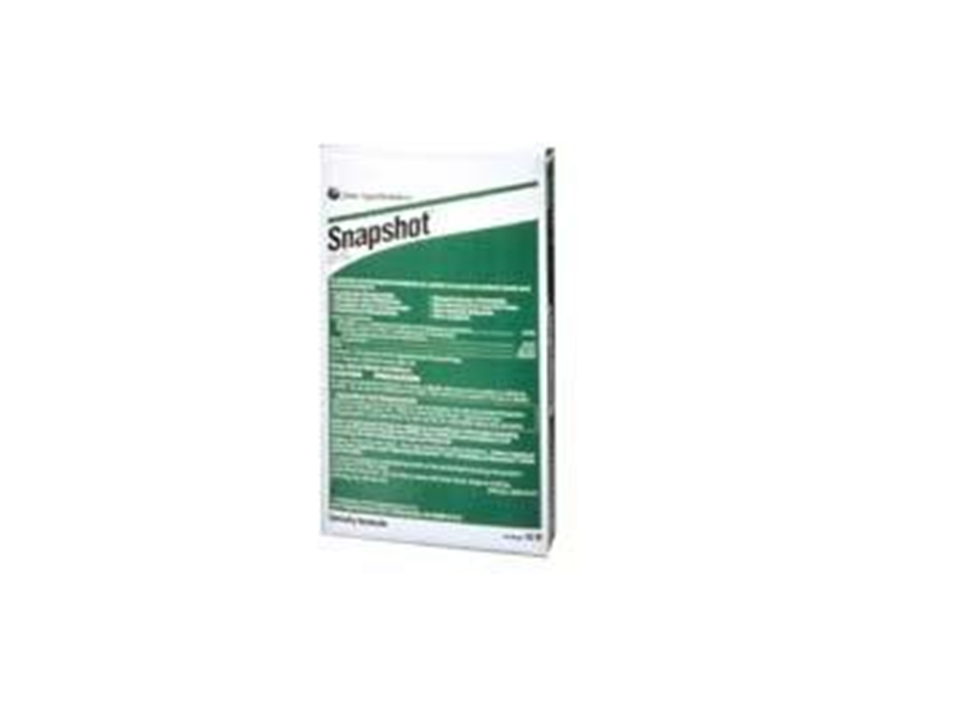Crabgrass is a common weed of lawns and gardens that appears as early as February in the South and near May in the North. Crabgrass is a weed almost everyone is familiar with. It has a prostrate growth habit and spreads along the ground, creating a dense mat that smothers desirable grasses.
Pre-emergent herbicides sometimes referred to as crabgrass preventers, are the most effective way to get rid of crabgrass.
Crabgrass, however, generates an insane amount of seeds, making it impossible to eradicate crabgrass with a single herbicide application. To get rid of this unsightly weed, you will have to commit to a multi-year prevention and control plan.
In addition, you will need to apply the crabgrass preventer at the right time to see satisfactory results. So, what is the best time to use a crabgrass pre-emergent herbicide?

Crabgrass preventer is most effective when applied in the early spring when soil temperatures are about 55 degrees Fahrenheit. For best results, apply the pre-emergent to the soil right before the rain (but not on wet grass) so that the herbicide washes down into the ground.
In addition, the flowering of plants such as dogwood and forsythia is usually a good sign to treat your lawn with a crabgrass preventer.
However, remember that depending on the climate zone, your location, and weather, the timing for application will vary. Below are a few tips to help determine the perfect time to apply a pre-emergent crabgrass herbicide to your lawn.
When To Apply Crabgrass Preventer To A Lawn?

It is absolutely necessary to get the timing right in order to eradicate this pesky lawn weed successfully. The ideal time to spray your lawn with a crabgrass preventer will change based on where you live, the climate, and soil temperature.
Also, keep in mind that the temperature of your lawn’s soil is influenced by the amount of sun and shadow that it receives. Nonetheless, here are a few general guidelines to help you decide the right time.
In the northern states, a crabgrass preventer should be applied to the lawn at the beginning of May. Whereas, in the southern regions, where crabgrass can appear as early as February, it is the best time to apply a crabgrass pre-emergent herbicide.
Many gardeners usually adhere to the standard practice of spraying crabgrass killer in the early spring, right after the forsythia shrubs have finished blooming. On the other hand, many lawn care businesses use crabgrass killer right when the forsythia shrubs start to bloom.
To save yourself the hassle, you can also use a soil thermometer to determine the best time to apply a crabgrass pre-emergent herbicide. Most crabgrass seeds start to germinate when the soil temperature hits 55 to 60 degrees Fahrenheit for a few days in a row.
So, that is when you should apply a crabgrass preventer to your lawn.
So, depending on where you live, you should start taking readings of the soil temperature as early as February with a soil thermometer. This will ensure that you don’t miss the optimal time for pre-emergent herbicide application.
Below is a brief overview of crabgrass control timing.
| Before Or After Rain | Apply the preventer at least three to four hours before the rain |
| Environmental Signs | Time the application with forsythia and dogwoods blooming |
| Before Or After Mowing | Mow your grass shorter than usual, and then use the pre-emergent herbicide |
| Soil Temperature | Wait for the soil temperature to reach around 55 – 70°F, and then spray the preventer |
RELATED: When Does Crabgrass Germinate? and How To Prevent Crabgrass Germination
How To Use A Soil Thermometer?

In order to correctly time your crab-grass pre-emergent herbicide application, you will need to understand how to use a soil thermometer correctly. It is quite simple!
All you need is a soil thermometer, a tape measure, a duct tape or marker, and a screwdriver. You can use the following method to measure the temperature of your lawn soil.
- Measure two inches from the handle of the screwdriver to its tip.
- Drive the screwdriver into the ground until the two-inch mark is even with the surface.
- To get a reading, place the soil thermometer into the pilot hole.
- Follow the directions for how long to keep the thermometer in the soil for a reading.
- Get a reading of both sunny and shady spots in your yard.
How To Apply A Crabgrass Preventer?

Since crabgrass preventer is a pre-emergent herbicide, it must be used before the seeds have germinated. To spread the herbicide on your lawn, you can use a grass spreader or garden seeder. Make sure that you apply the crabgrass preventer evenly throughout your lawn, being careful not to skip any areas.
After application, regularly water your lawn to make sure the crabgrass preventer gets activated and absorbed into the soil. If you are using a crabgrass preventer on a newly seeded lawn, wait for at least two or three mowings before doing it.
If you use a crabgrass preventer on a newly seeded lawn too soon, there is a big chance that it will harm or even kill the seedlings. Also, when applying the preventer to your lawn, you must follow the guidelines provided by the manufacturer.
Here are a few more tips to help you get the best out of a crabgrass preventer application:
- If the grass is wet, avoid applying the crabgrass preventer.
- If you are using a granular product, use it a few hours before the rain.
- If heavy rain is predicted, do not use the preventer. It will simply wash away!
- Do not seed your lawn at the same time you are using a crabgrass preventer.
- Disturbed (compacted, waterlogged) soils reduce the efficacy of crabgrass preventers.
Crabgrass Preventer Schedule
In order to efficiently control crabgrass in your yard, you will need to treat your lawn with a crabgrass preventer twice a calendar year. You should apply your first round of crabgrass pre-emergent herbicide in the early spring when soil temperature hits 55 degrees Fahrenheit.
Then, apply the pre-emergent herbicide again in the early summer, or about eight weeks later, when soil temperatures reach 65 to 70 degrees Fahrenheit.
However, remember that there is a maximum annual amount for each herbicide that you can apply in a single calendar year. So, be sure to check the labels of each herbicide you use.
Schedule For Warm-Season Lawns
| Crabgrass Preventer | Soil Temps (Fahrenheit) | Timing | Amount Per 1,000 Square Feet |
|---|---|---|---|
| 21-0-10 with 0.25% Dimension | 65 to 70 | In Early Summer | 4 pounds |
| 0-0-7 with 0.37% Prodiamine | 50 to 55 | In Early Spring | 4 pounds |
| 0-0-7 with 0.37% Prodiamine | 70 to 75 | In Late Summer | 5 pounds |
Schedule For Cool-Season Lawns
| Crabgrass Preventer | Soil Temps (Fahrenheit) | Timing | Amount Per 1,000 Square Feet |
|---|---|---|---|
| 21-0-10 with 0.25% Dimension | 65 to 70 | In Early Summer | 4 pounds |
| 0-0-7 with 0.37% Prodiamine | 50 to 55 | In Early Spring | 5 pounds |
Here are a few things that you need to consider when following these schedules:
- Dimension crabgrass preventer can act as a post-emergent herbicide as it also has some post-emergent qualities, primarily when used on younger crabgrass.
- You cannot use these crabgrass preventers on a newly seeded lawn. In addition to affecting crabgrass, they will also impact new seedlings.
When To Apply A Crabgrass Preventer? Before Or After Rain!

The ideal time to apply a crabgrass pre-emergent herbicide is just before it rains. The rainwater will wash the crabgrass preventer off the grass blades and help it absorb into the soil. There the herbicide will prevent the crabgrass seeds from developing roots and germinating.
However, if you apply the herbicide after a rain, make sure that you water the grass to wash the preventer off grass blades and into the soil.
Also, do not use crabgrass preventer on your lawn before heavy rain. It will simply wash away the herbicide off the lawn and into the drainage pipes.
Do not apply crabgrass preventer too early before it rains or you intend to water your lawn. The herbicide quickly breaks down and will become ineffective if used too soon.
All in all, observe the weather forecast in your area closely. Start applying the crabgrass preventer as soon as the weather report indicates it may rain in a few hours. However, water your lawn manually if it does not rain for 24 to 48 hours.
RELATED: Best Pre-emergent Herbicides For Crabgrass Prevention | How To Control Crabgrass?
Read The Crabgrass Preventer Labels
Reading the label of your preferred herbicide is the best approach to figure out when and how to use a pre-emergent herbicide. Each manufacturer includes suggestions on when to apply the crabgrass preventer for the best result.
Depending on the product, some crabgrass preventers provide short-term solutions while others give you a season-long control. Let’s discuss this in a bit more detail.
Best Short Residual Pre-Emergent
Following application, these herbicides typically last for about two months. The optimal time to apply crabgrass preventers with short-lived effects is usually around mid-April. However, the ideal time can vary depending on the local weather.
Examples of short-lasting crabgrass pre-emergents are Tupersan Crabgrass Control and Scott Halts. Personally, I like using Scotts Halts, which is shown in the picture below.

Best Long Residual Pre-Emergent
I would advise choosing the long-term options if you are unsure when to apply a crabgrass weed preventer. These herbicides can eliminate crabgrass from your lawn for the entire season with only one treatment
Snapshot crabgrass preventer and Dimension crabgrass preventer are the best examples of such herbicides. You can use any of these products. However, personally, I like using the Snapshot crabgrass preventer shown below.

Frequently Asked Questions
Can you apply a crabgrass preventer in the fall?
As fall progresses, temperatures begin to drop, which means that crabgrass seeds will no longer germinate. In addition, crabgrass preventative treatments do not need to be used in the fall because crabgrass will die due to the low temperatures and the frost, leaving bare places that need to be overseeded.
Can you apply a crabgrass preventer on a wet lawn?
You can apply liquid crabgrass preventers to wet grass since it will easily wash down from the grass blades into the soil and prevent weeds from growing. However, using granular crabgrass pre-emergent herbicides on wet grass is not a good idea since the preventer will simply stick on the wet leaves and will have no impact on reducing weeds. The best time to apply granular crabgrass preventers is when the turf is dry.
Do you water after applying a crabgrass preventer?
There is no need to water the lawn after using a liquid crabgrass preventer. However, when applying a granular crabgrass preventer, water is needed. Watering the lawn ensures that the herbicide penetrates the soil and contacts the crabgrass seeds. So, always water your lawn after using a solid pre-emergent herbicide, whether on dry or wet grass.
How often can you apply a crabgrass pre-emergent?
It is strongly advised that you use a crabgrass preventer at least twice a year because most weed prevention herbicides last up to 6 months. However, make sure you allow a minimum of 2 to 6 months between applications depending on the herbicide.
Also, avoid applying a crabgrass preventer to freshly sown lawns. Some pre-emergents can make grass seed germinate slowly or poorly. And if you are running behind on a crabgrass prevention schedule, you might want to try post-emergent weed-killing methods.
Is it too late to put down a crabgrass preventer?
Crabgrass cannot be controlled with a preventer once it has started to grow on your lawn. The purpose of a pre-emergent herbicide is to prevent crabgrass seeds from developing roots. To control established crabgrass, use a post-emergent crabgrass killer. You should also note that it is too late to apply a crabgrass pre-emergent when soil temperatures begin to fall at the end of spring.
Sources For Further Reading
Control of Crabgrass in Home Lawns – Purdue University Extension Service
Timing crabgrass pre-emergent applications in spring – Michigan State University Extension Service
Tips for controlling crabgrass in your lawn – University of Minnesota Extension Service







